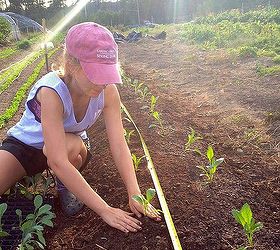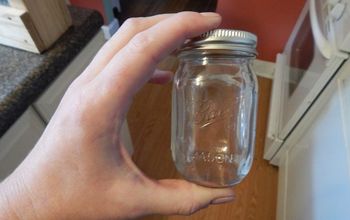5 Green Living Lessons We Can Learn from Universities

With new green initiatives, programs, and projects popping up every day, it pays to be constantly learning all there is to know about adopting sustainable practices and bringing them into your home. This way you can fulfill your goal for DIY green living.
It's no surprise that the second most viewed post ever on Hometalk is a post explaining how to grow the perfect tomato plant, using compost and water conserving techniques. Because of this one man's ingenuity, hundreds of thousands of people learned a new way to go green.
After seeing how much eco-conscious popularity could grow from just one idea, we decided to seek out other innovative green initiatives to share. And no platform is as involved in new green living initiatives as university and college campuses, filled with enthusiastic young recyclers, composters, and green living activists, learning and living eco-friendly lifestyles.
Hometalk got in touch with a handful of top tier green living universities, to learn what we could about innovative and important green initiatives. These five universities are stellar examples, not only of the importance of adopting a green lifestyle, but of just how easily that lifestyle can be implemented for our families and homes -- our smaller scale centers of education.
Since we're never too old to learn, here are some green living lessons from these top five universities:
1. Grow Your Own Produce
From: Duke University's Campus Farm
Duke students, faculty and staff get their hands dirty while learning about the complexity of the current food system at the Duke Campus Farm. /Courtesy of Duke University
At Duke University, sustainability is a team sport, which requires not just the participation of the school administration, which in the past decade has removed coal from campus steam plants and designed new high performance standard buildings, but input from students as well. "We are increasingly reliant on the campus community to make changes in their personal behavior to continue this trend," says Duke Sustainability Director, Tavey McDaniel Capps, including "work days at the Duke Campus Farm."
The Duke Campus Farm is a one-acre area designated for sustainable growing practices and teaching important lessons regarding the system through which we acquire our food. The Duke Campus Farm, founded in 2010, is maintained by a program staff and student crew, and provides thousands of pounds of fruits and vegetables yearly to the university dining halls. Thanks to student involvement in projects like these, says Capps, "the Duke community can help us meet our ambitious goals and have fun while doing it."
How to DIY it:
Inspired by Duke University's healthy growing and eating habits? You can easily start growing your own produce, simply by planting some vegetables in your garden, or even by adding a few pots of herbs to your kitchen countertop!
To plump up your new garden, get double the green, by starting your own compost bin or pile to add to your soil. Simply collect all of your healthy food scraps and biodegradable packaging materials, and store them in a container outside, where they can turn into delicious plant food. It's not hard to start and use your own, and you'll notice an immediate, encouraging response from your grateful garden.
2. Conserve Energy
From: University of South Florida's Renewable Energy Project
Courtesy of Catherine Lim/ University of South Florida
University of South Florida is constantly finding new ways to embrace green living, and their current projects continue to impress. Thanks to an innovative renewable energy project, called "Renew-a-Bull Biodiesel," students pay a voluntary green energy fee, which contributes to the cost of turning waste oil from the dining hall into biodiesel for University buses.
According to David Townsend, USF student and co-project leader, "the 'Renew-a-Bull Biodiesel' facility is designed, operated, and maintained by students from various academic disciplines and expertise." Townsend adds that this program is, "a prime example of the efforts made at USF to reduce the university's carbon footprint."
It seems that there's really no downside. Professor Aydin Sunol, who leads the project, explains the valuable benefits by clarifying that, "the unit integrated with University cooking supply and laboratory solvent reclamation options will work with recycled raw materials with no chemical cost."
What about the cost to the students? According to Dr. Ghebremichael , Director of the Office of Sustainability, "USF students have shown their strong support to sustainability by voting to renew the student green energy fee, that support renewable energy and energy efficiency projects on campus." Clearly, USF students understand that by bettering the environment, innovations like this one are improving everyone's quality of life, which is a cause they're more than willing to support.
How to DIY it:
Although there are a few DIY biodiesel ideas out there on the web, we don't recommend trying to make your own fuel unless you have the proper equipment and really know what you're doing. With that in mind, there are plenty of things you can do at home to conserve energy and improve air quality, without turning your cooking oil into biodiesel, or even paying a green fee.
Save energy and reduce your electric bill, by adopting green practices, like better insulating your home, turning off all unneeded lights in your house, and waiting for a full load of clothing before you run your washer and dryer.
Improve air quality by staying away from chemical cleaners and trying some homemade recipes for green cleaning detergents and soaps, or by bringing in air cleansing plants, like aloe, spider plants, and many other house plant varieties.
3. Conserve Water
From: Stanford University's Water Conservation Program
Courtesy of Linda A. Cicero/ Stanford University
Through green upgrades, like retrofit features in student housing (implementations like low-flow shower heads and faucet aerators), and installing water recycling dishwashers in their dining halls, Stanford University has "reduced potable water use by 20 percent over the last decade - despite continued campus growth."
Stanford's water conservation efforts, a program called Water Wise, combines campus upgrades with student commitment and dedication to the cause, to limit water use campus wide. On top of that, the new SESI energy project, which should be implemented this Spring, will further reduce potable water use by an additional 15 percent!
How to DIY it:
Though you might not be in the market for brand new water-conserving appliances, low-flow shower heads and faucet aerators are actually non-expensive ways to save on water use. Besides that, simple things you can do without going to the store include taking shorter showers, turning water off while you're applying shampoo, conditioner, or soap, and getting strategic with your laundering.
Another key in conserving water is collecting water you didn't even know you had, like rain water. Build your own rain barrel for gardens and flower beds, or add a rain garden, to use and filter your rainwater before it's lost to storm drains.
4. Recycle and Reuse
From: Green Mountain College's Recycling Program
Courtesy of Green Mountain College
According to Green Mountain College sustainability director, Aaron Witham, "Green Mountain's strategic plan, Sustainability 2020, keeps us on the cutting edge of sustainability in academic programs and operations." As well as several impressive green initiatives, Green Mountain College is looking to divert 99% of all recyclable and compostable material from their waste stream. "Toward that end," says Witham, "our students built and installed 28 three-stream waste systems to make proper disposal easier using a majority of recycled material and spending only $2,500," the price of one factory-made unit. "We do things resourcefully," he adds, "using whatever recycled material we can find because we believe that true environmentalism requires frugality."
How to DIY it:
As a homeowner, you don't need to build a waste system to cut down on your waste -- simply find new ways to reuse and recycle your household products, like boxes and bottles, and even try some ideas for recycling your food waste.
Instead of putting any reusable items in the trash, think about other ways you can use them in your home or garden. There are dozens of ways to get more use out of an empty cardboard box, or reuse a glass bottle or jar. Even those items that you think might really have earned a seat in the garbage truck, like a ripped sweater or a busted piece of furniture, can be renewed or repurposed.
When you've taken all the reusable material you'll use, make sure that the leftovers are sorted into recycling and garbage before you toss the pile. Not everything can be reused, but losing recyclable material to the trash is an oversight that a little patience can solve.
5. Keep Learning
From: Berea College's Ecovillage
Courtesy of Berea College
"Berea College is very proud of its various programs and facilities that teach and encourage life-long sustainable behavior," says Joan Pauley, Sustainability Coordinator at Berea College. "Arising out of the Berea's 160 old commitment to 'plain living,' students learn in classrooms and in residential campus life how to lead eco-friendly lifestyles," says Pauley, highlighting Berea College's Ecovillage, where students commit to live in sustainably-built housing, adopt greener lifestyles , and devote ample time to learning by doing. According to their website, the Berea College Ecovillage is "first and foremost about education."
How to DIY it:
Well, if you've gotten to this point in the article, you're off to a great start! Learning about what effect we have on our environment and how we can improve that effect is the first step of green living. Being conscious of our carbon footprint, our use of chemicals, our waste production, and much more will help us to learn and live green. Green living takes a drop of commitment, but the benefits are not just for you, they're for your children, your family, your neighbors, and the entire living and breathing world.
Looking to learn some more? Find out some great green cleaning tips, sustainable landscaping techniques, or share your favorite green living trick below!
Based on research done by The Princeton Review and Sierra Club.
Enjoyed the project?
Suggested materials:
- Soil
- Plants
Comments
Join the conversation
-
 Kara Wurtzel
on Dec 07, 2017
Kara Wurtzel
on Dec 07, 2017
Planted our own corn this year (just a 12 plants or so), and it was such a great learning experience. Can't wait to try something else.
-
-































Frequently asked questions
Have a question about this project?
How do you do your green planting for indoor transplants?